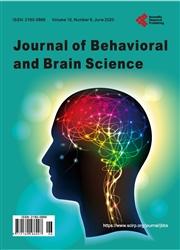The Association of Stress with the Socio-Economic Factors of Individuals That Attended the Taxpayers’ Appreciation Week 2018, Kampala Uganda
引用次数: 0
Abstract
Introduction: Work-related stress has increased in nine European Union (EU) countries in the last ten years. Eighty (80%) percent of the general population in European countries believes that work-related stress will rise in the coming five years. Objective: The purpose of this study was to determine the association between the various levels of stress with the socio-economic elements among individuals that participated in Uganda’s tax payer’s appreciation week in the year 2018 held in Kampala. Methodology: This study applied a cross-sectional study design that unified quantitative research methods and a convenience sampling method were used in this study to gather the information from the 390 respondents. Data were examined using SPSS version 20; univariate and bivariate analysis were done to measure the association between stress and the participant’s socio-economic factors. Results: Respondents who were employed recorded the majority with a percentage of 60%, while the unemployed recorded the minority with a percentage of 40%. Respondents who were employed were more likely to experience low stress as compared to those who were unemployed, under the category of moderate stress, respondents who were employed were more likely to be moderately stressed as compared to their unemployed counterparts, as for the category of high stress, unemployed respondents were more likely to be highly stressed than those that were employed and this was not statistically significant (X2 =2.374; p-value = 0.305). Conclusion: The results from this research indicated that there was no significant association between the socioeconomic factors of the respondents with stress levels. Recommendations: More community sensitization and awareness should be carried out to educate individuals about stress and its impacts on health.参加2018年乌干达坎帕拉纳税人感谢周的个人压力与社会经济因素的关系
引言:在过去十年中,九个欧盟国家的工作压力有所增加。欧洲国家80%的普通人口认为,未来五年与工作相关的压力会增加。目的:本研究的目的是确定参加2018年在坎帕拉举行的乌干达纳税人增值周的个人的不同压力水平与社会经济因素之间的关系。方法:本研究采用横断面研究设计,采用统一的定量研究方法和方便抽样方法,从390名受访者中收集信息。数据采用SPSS版本20进行检验;通过单变量和双变量分析来衡量压力与参与者的社会经济因素之间的关系。结果:就业的受访者占大多数,占60%,而失业的受访者占少数,占40%。与失业者相比,有工作的受访者更有可能经历低压力。在中等压力类别下,与失业的受访者相比,有就业者更有可能经历中等压力,在高压力类别下,失业受访者比在职受访者更有可能承受高压力,这在统计学上并不显著(X2=2.374;p值=0.305)。结论:本研究结果表明,受访者的社会经济因素与压力水平之间没有显著关联。建议:应加强对社区的宣传和认识,教育个人压力及其对健康的影响。
本文章由计算机程序翻译,如有差异,请以英文原文为准。
求助全文
约1分钟内获得全文
求助全文

 求助内容:
求助内容: 应助结果提醒方式:
应助结果提醒方式:


